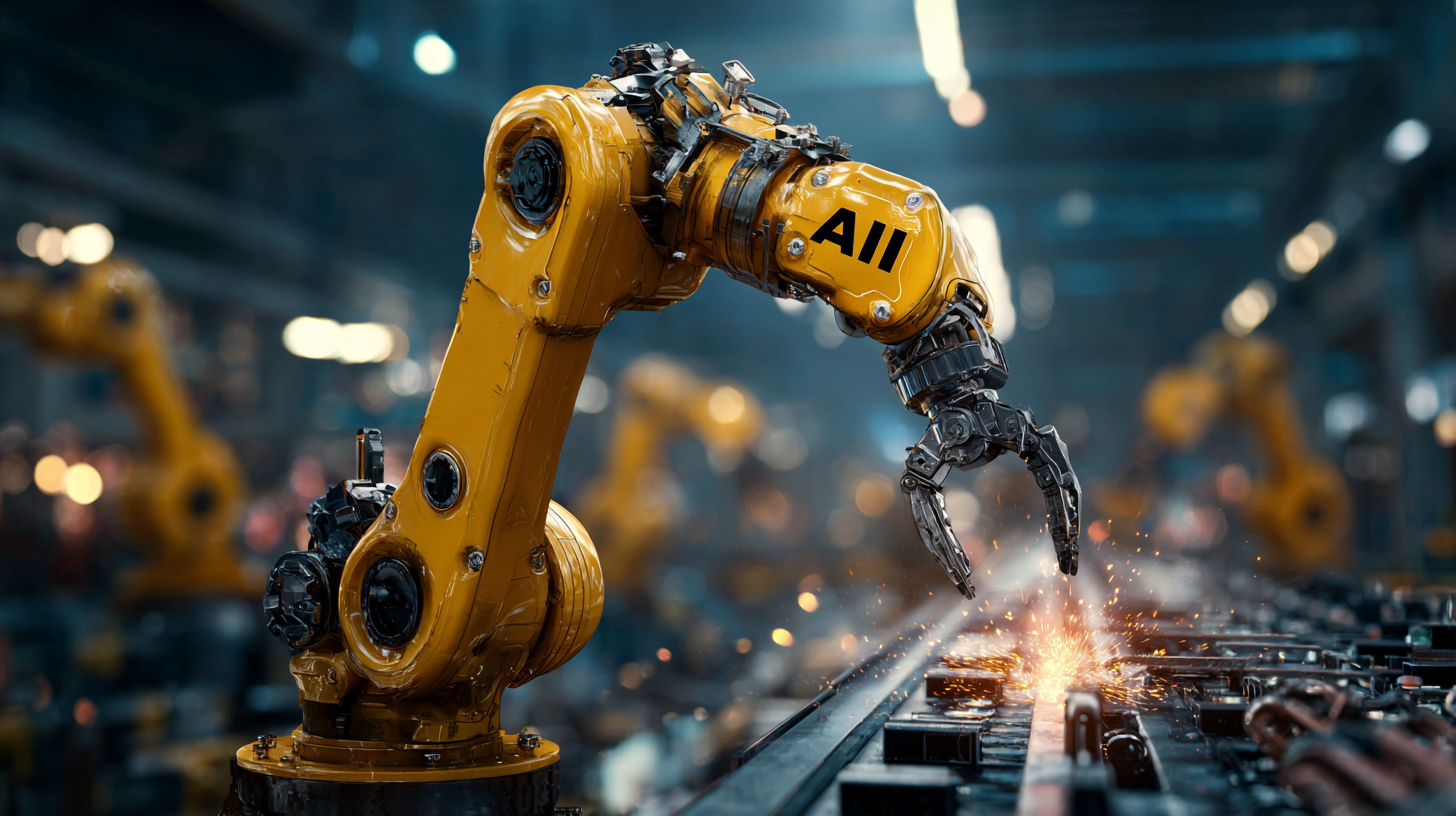
How to Choose Best Manufacturers Amid 2025 Technology Development Trends
As we look towards the technological advancements anticipated by 2025, the process of selecting the best manufacturers becomes increasingly critical for businesses aiming to remain competitive. According to a report by Markets and Markets, the global manufacturing industry is projected to reach $12 trillion by 2025, driven by innovations in automation, artificial intelligence, and the Internet of Things (IoT). These trends not only enhance operational efficiency but also demand a higher standard of quality and reliability from manufacturers.

In this landscape, discerning which manufacturers can adapt and thrive becomes essential for companies focused on sustaining growth. This blog will explore key strategies for evaluating manufacturers amidst evolving technology development trends, ensuring that businesses can forge strong partnerships that align with their future goals.
Identifying Key Industry Application Cases for Technology in 2025
 As technology continues to evolve, identifying key industry application cases for
2025 becomes crucial for manufacturers
aiming to stay ahead in a competitive landscape. According to a report from Gartner, it is
predicted that by 2025, 75%
of organizations will shift from piloting to operationalizing AI. This transformation will not
only enhance operational efficiency but also drive innovation across sectors such as
healthcare, manufacturing, and logistics. By focusing on specific applications, manufacturers
can leverage AI to automate processes and improve decision-making.
As technology continues to evolve, identifying key industry application cases for
2025 becomes crucial for manufacturers
aiming to stay ahead in a competitive landscape. According to a report from Gartner, it is
predicted that by 2025, 75%
of organizations will shift from piloting to operationalizing AI. This transformation will not
only enhance operational efficiency but also drive innovation across sectors such as
healthcare, manufacturing, and logistics. By focusing on specific applications, manufacturers
can leverage AI to automate processes and improve decision-making.
Tip: Evaluate your current technology
stack and identify bottlenecks that could benefit from AI implementation. This proactive
approach will enable you to prioritize investments wisely.
Additionally, the rise of the Internet of Things (IoT) indicates a significant trend, with
Statista projecting that there will be over 75 billion
connected devices by 2025. This connectivity
will facilitate data collection at unprecedented levels, allowing manufacturers to optimize
supply chain management and enhance customer experiences. The case studies from early adopters
illustrate how IoT can lead to significant cost savings and efficiency improvements.
Tip: Collaborate with IoT solution
providers to explore tailored implementations that align with your industry needs.
As we navigate through these technology development trends, being proactive about identifying
and adopting relevant applications will position manufacturers for success in the rapidly
advancing marketplace.
Evaluating Manufacturers Based on Adaptability to Emerging Trends
When evaluating manufacturers in the context of the rapidly evolving technological landscape of 2025, adaptability is paramount. It’s crucial to assess how well a potential manufacturing partner can pivot in response to emerging trends, such as artificial intelligence, automation, and sustainable practices. Manufacturers that have demonstrated agility in adopting new technologies are more likely to stay competitive, ensuring they meet the changing demands of the market.
Moreover, investigating a manufacturer’s history of innovation can provide insights into their adaptability. Look for companies that invest in research and development, actively seek feedback from end-users, and regularly update their production processes. Partnerships with tech firms and participation in industry forums can also indicate a commitment to staying at the forefront of technological advancements. By focusing on these adaptability criteria, businesses can find manufacturers not just equipped for today, but those poised for the future.

Understanding the Role of Innovation in Choosing the Right Partner
In the rapidly evolving landscape of technology, selecting the right manufacturing partner is crucial for businesses aiming to stay ahead. Innovation serves as a cornerstone in this decision-making process. Manufacturers that prioritize cutting-edge technology and research and development often possess the agility needed to adapt to market changes. Companies should seek partners who not only demonstrate an understanding of current trends but also exhibit a commitment to future innovations. This foresight enables them to proactively address challenges and seize opportunities that arise in the marketplace.
Moreover, a manufacturer’s track record in innovation can significantly influence product quality and development speed. When evaluating potential partners, businesses should assess their history of launching new products, adopting advanced technologies, and improving processes. Collaborating with manufacturers that leverage innovative techniques—from automation to sustainable practices—can enhance operational efficiencies and create value. Ultimately, by prioritizing innovation in their selection criteria, companies can foster strategic partnerships that not only meet current needs but also drive long-term growth and success.
How to Choose Best Manufacturers Amid 2025 Technology Development Trends
| Criteria | Importance Level (1-5) | Notes |
|---|---|---|
| Technological Innovation | 5 | Focus on companies adopting cutting-edge technologies. |
| Sustainability Practices | 4 | Consider manufacturers with eco-friendly processes. |
| R&D Investment | 5 | Evaluate their commitment to research and innovation. |
| Supply Chain Efficiency | 4 | Assess how well they manage logistics and delivery. |
| Partnerships and Collaborations | 4 | Look for alliances with tech firms and research institutions. |
| Customer Feedback and Satisfaction | 5 | Evaluate existing customer reviews and ratings. |
| Flexibility and Scalability | 3 | Consider manufacturers' ability to scale production up or down. |
Assessing Manufacturer Reliability Through Case Studies and Testimonials
When selecting the best manufacturers in light of 2025 technology development trends, assessing reliability through case studies and testimonials becomes crucial. Case studies serve as concrete evidence of a manufacturer's capabilities, showcasing real-world applications of their products. By examining specific scenarios where the manufacturer has excelled, potential partners can gain insights into their problem-solving abilities, adaptability, and overall performance under varying conditions. A well-documented case study highlights the manufacturer's experience in dealing with challenges similar to those faced in your own industry, making it an invaluable resource for informed decision-making.
Testimonials add another layer of credibility to a manufacturer’s reliability. First-hand accounts from past and current clients provide a glimpse into the manufacturer’s customer service, consistency, and ability to deliver on promises. Positive testimonials can signal a manufacturer’s commitment to quality and customer satisfaction, while negative feedback can highlight potential red flags that warrant further investigation. By prioritizing both case studies and testimonials, businesses can build a reliable shortlist of manufacturers that not only align with their technological needs but also demonstrate a proven track record of reliability and excellence in their field.
Leveraging Technology Ecosystems to Enhance Manufacturing Decisions
In the rapidly evolving landscape of 2025, choosing the right manufacturers is increasingly reliant on leveraging technology ecosystems. Decision support systems, decision enhancement tools, and automation applications have become critical for both large enterprises and SMEs. According to a recent report by Grand View Research, the global decision support systems market is projected to reach $7.6 billion by 2025, reflecting a CAGR of 9.3%. This trend underscores the importance of integrating advanced technologies to streamline manufacturing decisions and drive efficiency.
Industry sectors such as IT & Telecommunications and BFSI (Banking, Financial Services, and Insurance) are leading the way in harnessing these technologies. For instance, in transportation and logistics, companies are utilizing predictive analytics to optimize supply chain operations, while retailers are leveraging automation to enhance customer experiences. The transformative power of artificial intelligence is evident, as highlighted by the International Data Corporation, which predicts that AI will boost global GDP by $15.7 trillion by 2030. This surge presents a unique opportunity for manufacturers to embrace AI-driven innovations and position themselves competitively within their respective markets.
